In a recent article published in Science Signaling, Yuangheng He and colleagues asked how the weak alkaline compound chloroquine (CQ) enhances the anti-inflammatory effects of synthetic glucocorticoids like dexamethasone, which are used to treat a host of inflammatory and autoimmune diseases. In the process they explored the intersection of lysosomal degradation pathways and glucocorticoid receptor signaling. For these investigations, they needed tools such as reporters and protein tags that allowed sensitive and accurate detection of events in real time in a variety of cells and systems.
The work is fascinating and removes the lysosome from its pigeon-hole description of garbage can (or recycling center) of the cell and places it in the center of cell signaling. The work also is fascinating because it takes a systems-view of a biological question: How is it that the drug chloroquine just happens to influence glucocorticoid signaling? To answer this question the authors employ an amazing array of techniques and technologies to ask questions in several systems under a many different conditions. The result is a work that explains a lot, but like all good science raises new questions for us to scratch our heads over.
Here I review this paper using “sketchnotes” with emphasis on the research techniques the researchers used.
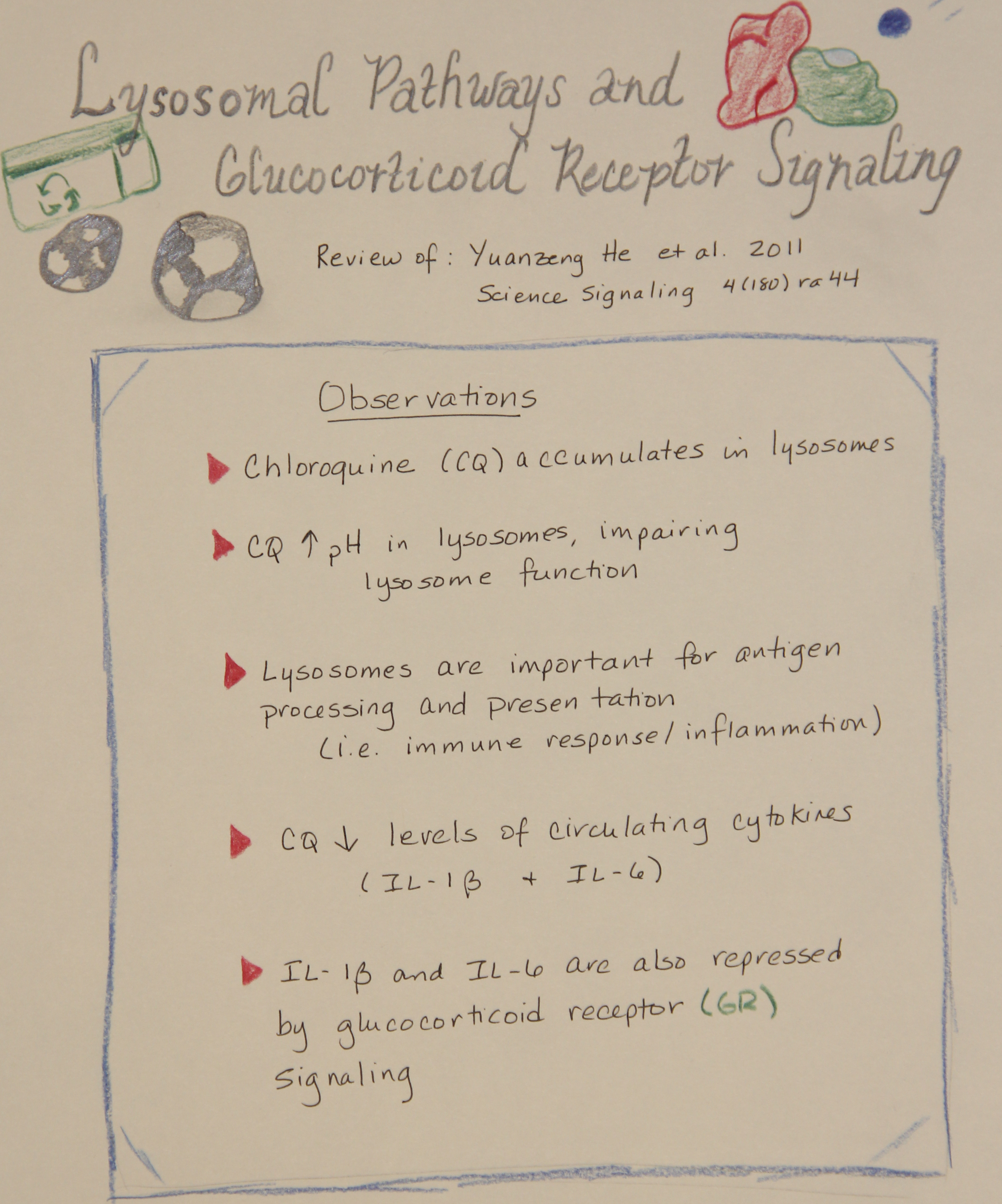
![]() He Y, Xu Y, Zhang C, Gao X, Dykema KJ, Martin KR, Ke J, Hudson EA, Khoo SK, Resau JH, Alberts AS, MacKeigan JP, Furge KA, & Xu HE (2011). Identification of a lysosomal pathway that modulates glucocorticoid signaling and the inflammatory response. Science signaling, 4 (180) PMID: 21730326
He Y, Xu Y, Zhang C, Gao X, Dykema KJ, Martin KR, Ke J, Hudson EA, Khoo SK, Resau JH, Alberts AS, MacKeigan JP, Furge KA, & Xu HE (2011). Identification of a lysosomal pathway that modulates glucocorticoid signaling and the inflammatory response. Science signaling, 4 (180) PMID: 21730326
Michele Arduengo
Latest posts by Michele Arduengo (see all)
- An Unexpected Role for RNA Methylation in Mitosis Leads to New Understanding of Neurodevelopmental Disorders - March 27, 2025
- Unlocking the Secrets of ADP-Ribosylation with Arg-C Ultra Protease, a Key Enzyme for Studying Ester-Linked Protein Modifications - November 13, 2024
- Exploring the Respiratory Virus Landscape: Pre-Pandemic Data and Pandemic Preparedness - October 29, 2024
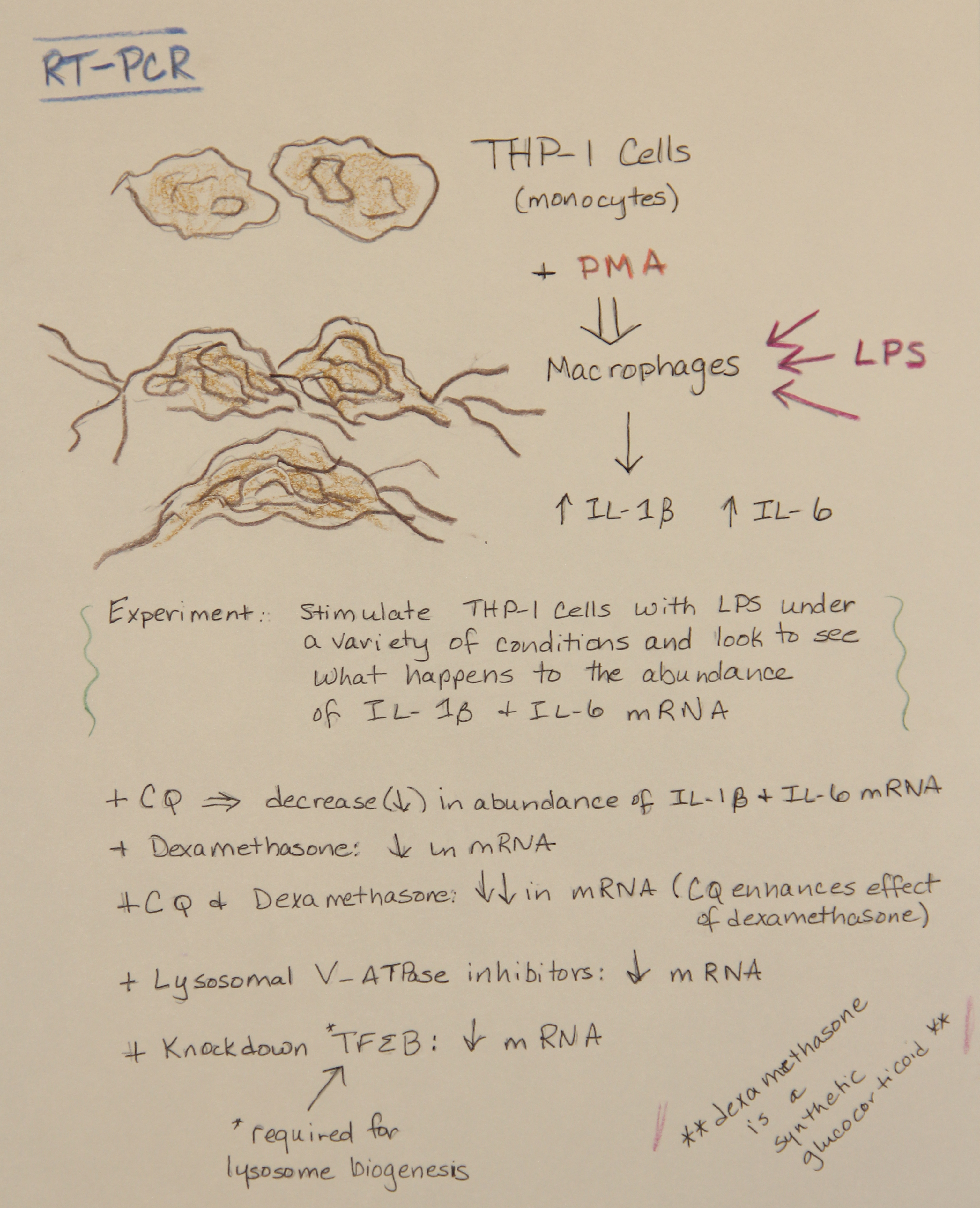
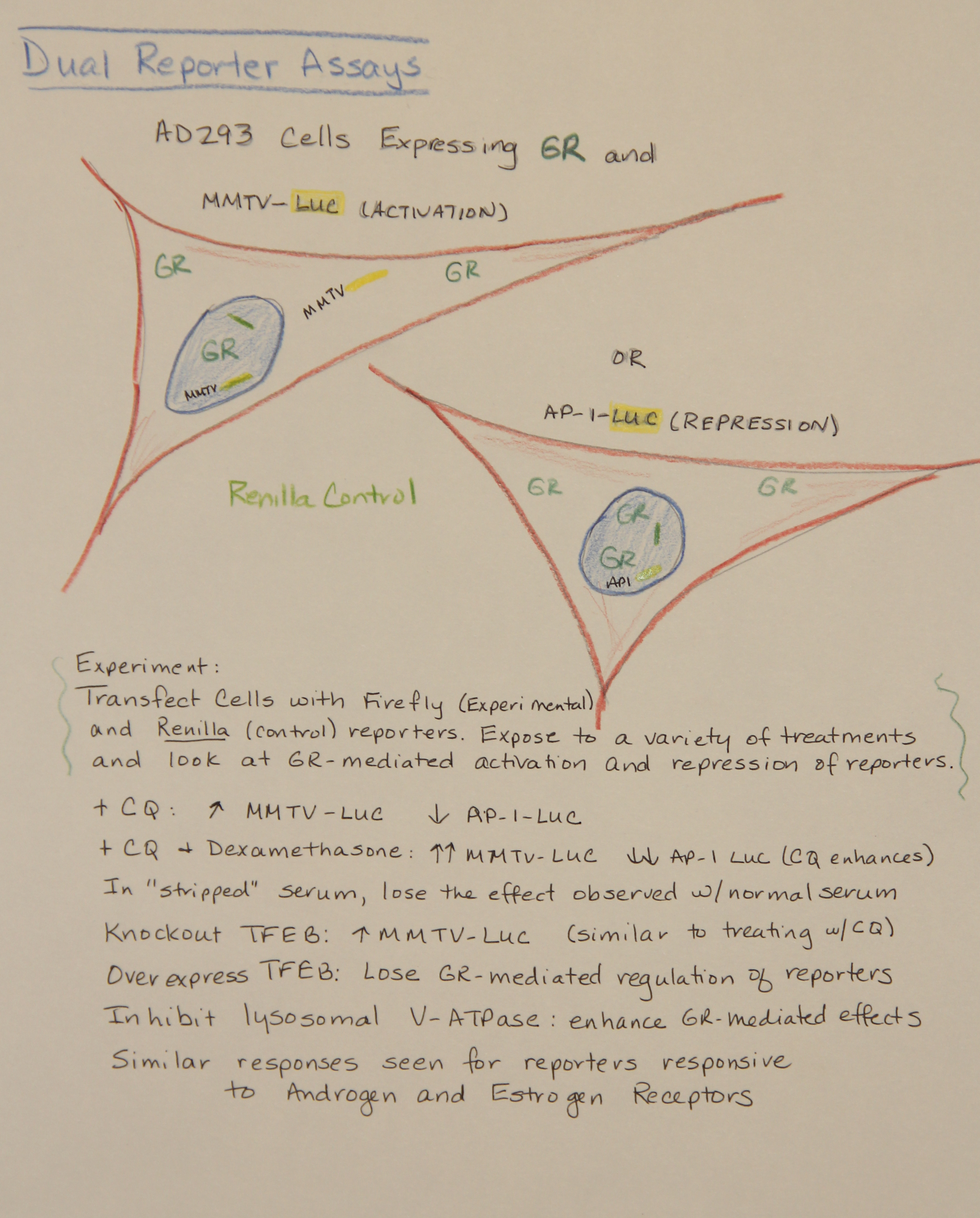
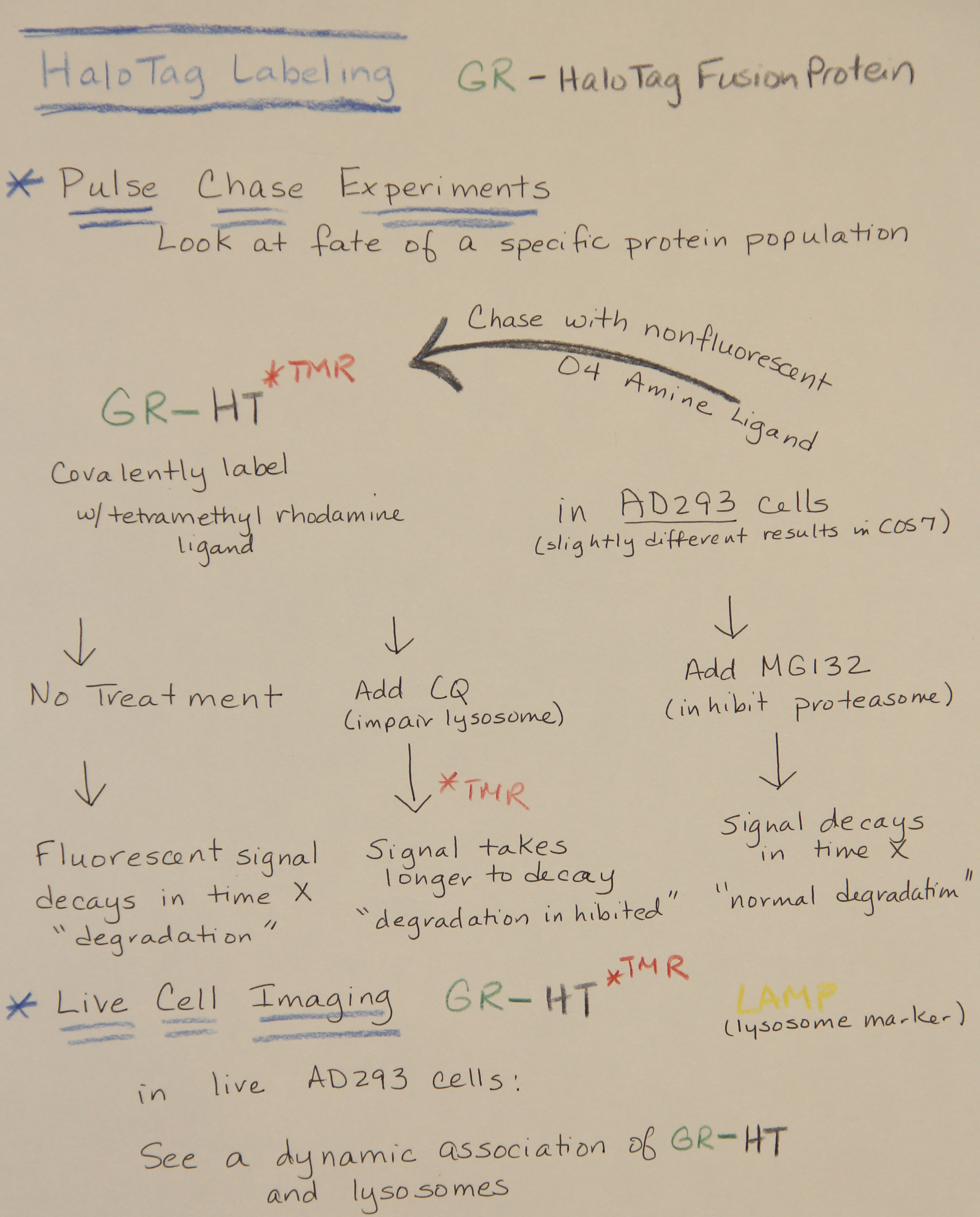
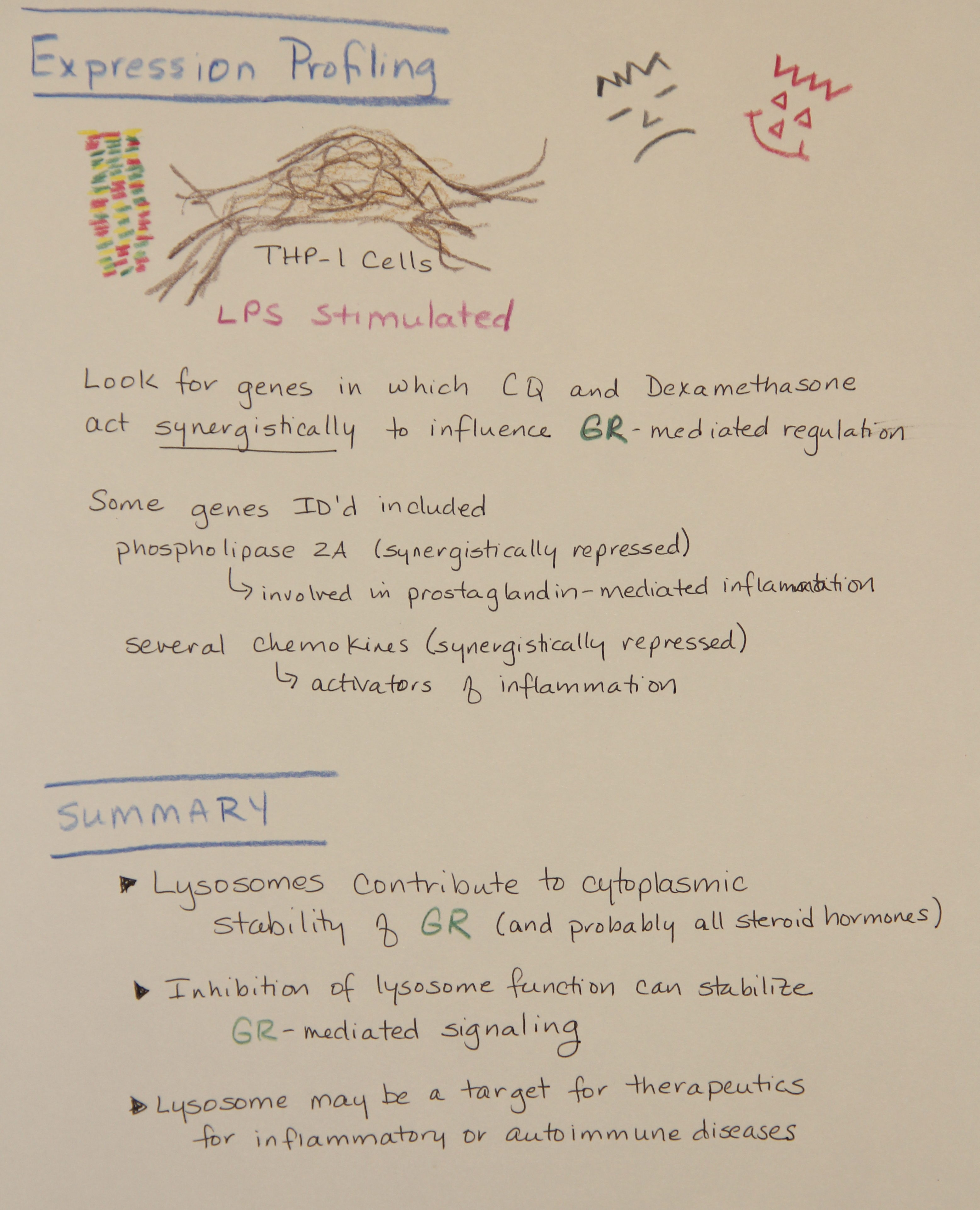

Your sketchnotes are really helpful, I actually do something kind of similar in my studying using a large drawing pad. I’m going to have to take a closer look at lysosome communication pathways within the inflammatory response, as I haven’t thought about or been taught them before.
Hi Austin,
I’m glad you found the notes helpful. This was a paper that just did not lend itself to a written summary; it was much easier to describe with notes. This is an intriguing paper. It sort of makes sense that if the lysosome is controlling the stability of the receptors, it can influence signaling, but until I read this paper I had never really thought about it before either. Good luck with your studies and your sketches.
Michele
Hi Michele,
I randomly bump into your write-up of our paper of lysosome and GR. Your note sum up better than our lengthy paper, which took a while to finally appear in Science Signaling after it was skipped by several other top journals. Nature Review of Immunology has highlighted our paper in their editorial and I think that the idea of connection of lysosome with nuclear receptors (inflammation, metabolism, and cancer?) has not caught up with people yet. Let’s see……
Eric
Hi Eric,
I’m so glad you like the summary. It was an amazing paper to read and thought-changer for me to realize the role of the lysosome in signaling–and the implications of that. I’ll be looking forward to seeing more of this story. Please let me know if you publish follow up papers on this topic.
Michele